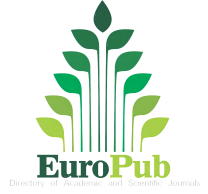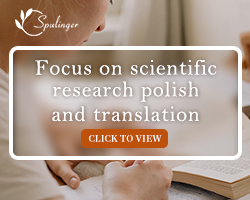The Clinical Efficacy of Self-Designed Nuangong Zhitong Ling in Primary Dysmenorrhea of Cold Coagulation Syndrome
DOI:
https://doi.org/10.62767/jecacm603.1524Keywords:
Self-Designed Nuangong Zhitong Ling, primary dysmenorrhea of cold coagulation syndrome, infrared thermal imaging region temperatureAbstract
Objective: To investigate the clinical efficacy of the self-designed Nuangong Zhitong Ling in primary dysmenorrhea (PD) of cold coagulation syndrome. Methods: Forty patients with PD of cold coagulation syndrome who were treated with the self-designed Nuangong Zhitong Ling in our hospital from January 2023 to December 2024 were included in the study group. Another 40 patients with the same disease who were treated with ibuprofen sustained-release capsules during the same period were included in the control group. The clinical efficacy, pain conditions, temperature changes in the infrared thermal imaging regions of the two groups were compared, and the occurrence of adverse reactions during the treatment period was statistically analyzed. Results: After 3 months of treatment, the total effective rate of the study group was higher than that of the control group (75.00% vs 42.50%; p < 0.05). After 1, 2, and 3 months of treatment, the visual analogue scale (VAS) scores of pain in both groups were decreased, and the degree of decrease in the study group was greater than that in the control group (p < 0.05). After 3 months of treatment, the temperatures of the Shenque, and lower abdomen in the study group were lower than those in the control group (p < 0.05). During the treatment period, no adverse reactions such as nausea, vomiting, or dizziness occurred in either group. Conclusion: The self-designed Nuangong Zhitong Ling has significant application value in PD of cold coagulation syndrome, which can provide clinical efficacy via relieving pain symptoms and improving local tissue temperature changes to remove cold retention and blockage, without serious adverse reactions yet with good safety.
References
Li Y, Zhu QQ, Wang H, et al. Based on data mining to explore rules of composition of patent traditional Chinese medicine (TCM) compound in treatment of primary dysmenorrhea. Journal of Xinjiang Medical University 2024; 47(11): 1521-1527.
Zhang YL, Sha YH, Zhou JY, et al. Cao Danong's experience in treating primary dysmenorrhea from "Homogency of Blood and Body Fluids". Chinese Journal of Library and Information Science for Traditional Chinese Medicine 2024; 48(6): 302-305.
Liu EC, Zhao S, Chen YY, et al. Incidence of primary dysmenorrhea in young women in grassroots army of northern area: An investigation of 807 cases. Academic Journal of Pla Postgraduate Medical School 2021; 42(3): 262-265.
Itani R, Soubra L, Karout S, et al. Primary dysmenorrhea: Pathophysiology, diagnosis, and treatment updates. Korean Journal of Family Medicine 2022; 43(2): 101-108.
Wang YP, Wang YY. Analysis of the development course of traditional Chinese medicine standardization and recommendations on future work. Guidelines and Standards in Chinese Medicine 2023; 1(1): 1-8.
Geng N, Hu H, Xie DD, et al. Effect of abdominal vibration on the projection temperature of uterus surface and prostaglandin E2 and prostaglandin F2α of cold coagulation dysmenorrhea rats. China Medical Herald 2022; 19(12): 4-7+25.
Gan YY, Ma LX, Yu WY, et al. Effects of transverse and perpendicular needling at Sanyinjiao (SP6) on the uterine microcirculation and NO, NOS in cold congealing dysmenorrhea rats. China Journal of Traditional Chinese Medicine and Pharmacy 2021; 36(3): 1663-1667.
Huang B. Issue of technical guidelines for clinical research of TCM new drugs of syndrome category. Journal of Traditional Chinese Medicine Management 2018; 26(21): 107.
Li SH, Li L, Yang RN, et al. Compounds of traditional Chinese medicine and neuropathic pain. Chinese Journal of Natural Medicines 2020; 18: 28-35.
Hongzhi D, Xiaoying H, Yujie G, et al. Classic mechanisms and experimental models for the anti-inflammatory effect of traditional Chinese medicine. Animal Models and Experimental Medicine 2022; 5: 108-119.
Duan W, Chen D, Li D, et al. Traditional Chinese medicine treatment strategies for primary dysmenorrhea. Frontiers in Endocrinology 2025; 16: 1580051.
Zheng ZP, Zeng HS, Ding CJ, et al. Summary on the infrared thermal imaging temperature measurement technology and its application. Infrared Technology 2003; (1): 96-98.
Wang C, Zhang K, Qiu E, et al. Research progress in pharmacology and toxicology of Euodiae Fructus. Chinese Journal of Library and Information Science for Traditional Chinese Medicine 2024; 48(5): 279-283.
Liu YQ, Li H, Gong S, et al. Comparison of analgesic activity of Fructus Evodiae wine before and after preparation and the pharmacological basis of its efficacy in mice with dysmenorrhea. Chinese Traditional Patent Medicine 2021; 43(12): 3484-3489.
Wang JB, Zhang ZW, Ma RL, et al. The analgesic effect and mechanism of effective component compatibility of Angelica sinensis in dysmenorrhea model rats. Lishizhen Medicine and Materia Medica Research 2023; 34(6): 1356-1358.
Zhou JJ, Gan N, Ning S. Application of anticoagulant drugs combined with Chuanqiong Danshen in patients with increased uterine artery resistance in early pregnancy. Acta Medicinae Sinica 2025; 36(5): 134-138.
Ju L, Li YK. The therapeutic efficacy of Ningxue Decoction combined with modified Xuefu Zhuyu Decoction and Shengpunghuang Decoction in treating vitreous hemorrhage. TCM Research 2024; 37(3): 50-54.
Zhang L, Zhang HQ, Chen SY, et al. Realizing the experience of Chief Physician Xu Jun in treating chronic kidney disease with "Deficiency and Damp Stasis". Asia-Pacific Traditional Medicine 2023; 19(1): 113-116.
Lin X, Zhu M, Lu H, et al. Clinical efficacy of a novel floating needle therapy based on infrared thermography for locating myofascial trigger points in the treatment of knee osteoarthritis. Chinese Manipulation and Rehabilitation Medicine 2022; 13(1): 1-4.
Cao Z, Wang L, He J. The diagnostic value of infrared thermography in painful diseases. Contemporary Medicine 2022; 28(634): 140-142.
Li WL, Sun XM, Song H, et al. Study on traditional Chinese medicine Euodia rutaecarpa with small poison based on composition and function. Journal of Harbin University of Commerce (Natural Sciences Edition) 2018; 34(2): 151-154.
Zhang Y, Zhang XY, Wang LL, et al. Research progress of DangGui and its effective components in the treatment of primary dysmenorrhea. Modern Journal of Integrated Traditional Chinese and Western Medicine 2023; 32(23): 3339-3344.
Wang L, Xie Q, Mao YJ, et al. The effect of DangGui-Chuan XiNiu Decoction on the expression of serum ET-1 and NO in spontaneously hypertensive rats. Modernization of Traditional Chinese Medicine and Materia Materia-World Science and Technology 2019; 21(11): 2526-2531.
Published
Data Availability Statement
The data presented in this study are available on request from the corresponding author.
Issue
Section
License
Copyright (c) 2025 The Author(s)

This work is licensed under a Creative Commons Attribution 4.0 International License.







